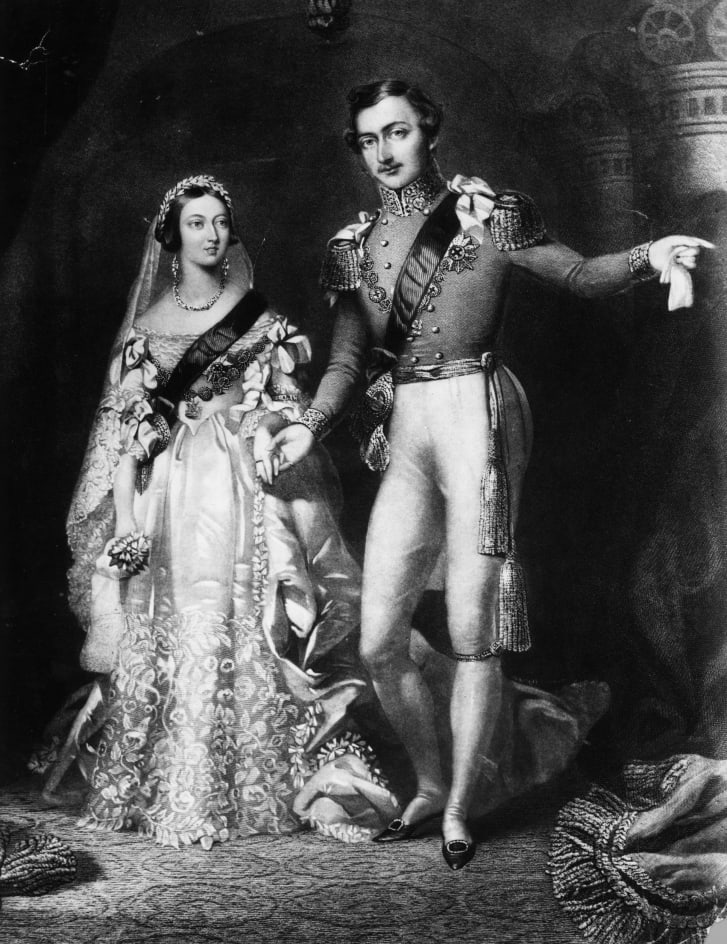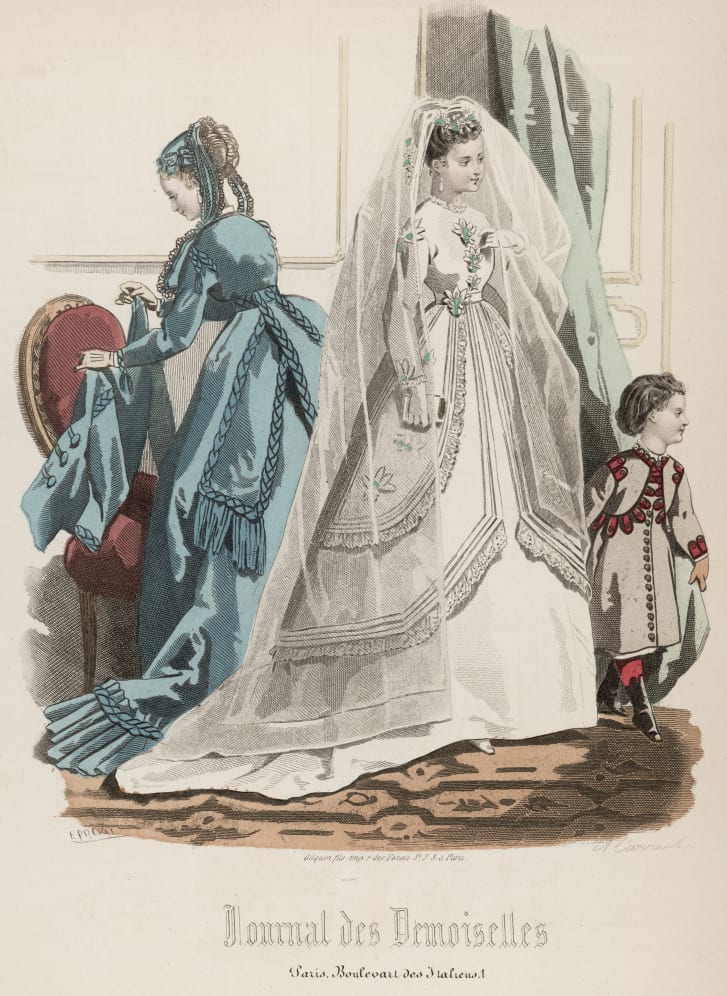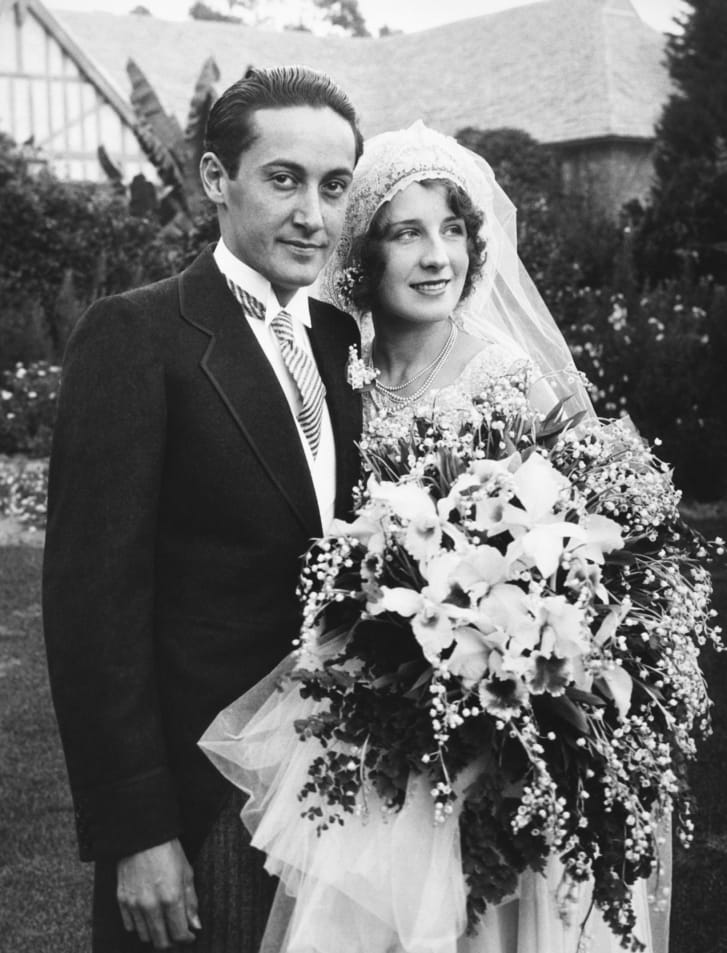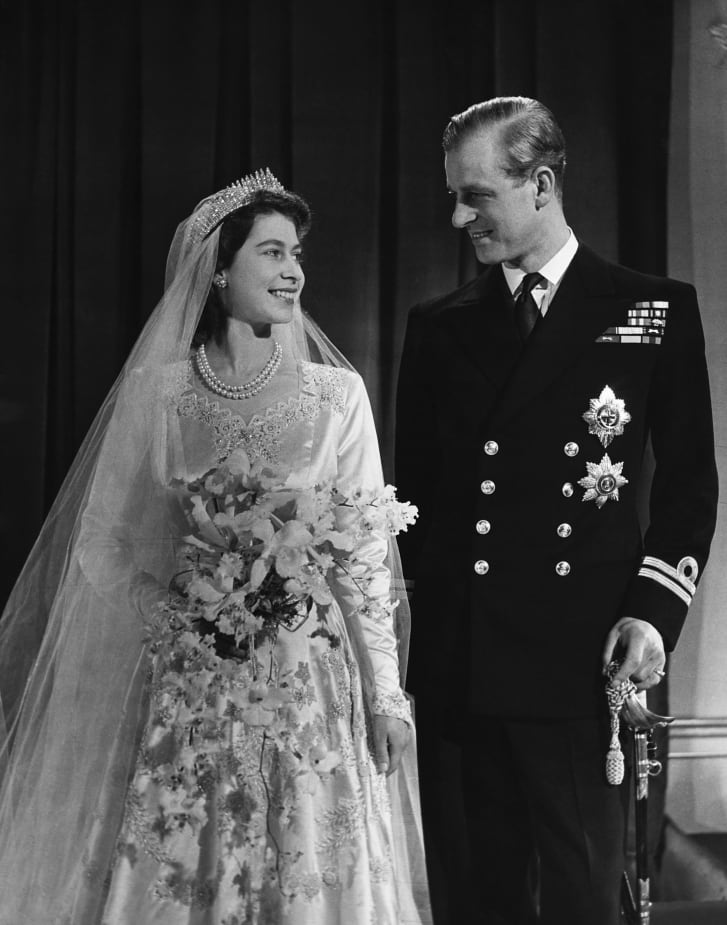[masterslider id=”10″]
Why so many brides wear white on their wedding day
While this seems like a shocking pick in 2018, prior to the 20th century this would have been the norm for wealthy European brides. Pristine, white, fairy-tale wedding dresses, to be worn once and then tucked away, weren’t the standard until relatively recently. Before then, colored dresses were the norm for brides of all classes.
The surprising history of the white wedding dress
While a few historic women wore white gowns to the altar over the centuries — including Mary Queen of Scots in 1558 — it wasn’t until Queen Victoria debuted a white silk-spun gown at her wedding to Prince Albert in 1840 that the look really took root. Side-stepping the usual fur, gold embroidery, and rich colors that were the norm among the aristocracy at the time, Victoria stepped out of her carriage wearing a simple white dress accented with Honiton lace, and traded her crown for a wreath of orange blossoms and myrtle.
However, when the wedding march began and the guests turned around, they found it all very underwhelming — where was the pomp and circumstance? Royal weddings were more about wealth and political contracts than love, so families typically took the opportunity to express their affluence through their brides: Margaret of York’s wedding dress from 1468 was reportedly so heavy with heirloom jewels that she had to be carried into the church; Princess Charlotte, in 1816, wore a silver lamé gown embroidered with shells and flowers, which was said to have cost £10,000 (the equivalent of about $1.3 million, adjusting for inflation). By showing up in a simple white dress, it seemed that Victoria was throwing a frugal affair.
That was partly the point. A young Lady Regent at 20, Queen Victoria wanted to show good sense and prudence on her wedding to show her people that she would run their country much in the same way.
An illustration of Queen Victoria and Prince Albert on their return from the marriage service at St. James’s Palace in London. Credit: Rischgitz/Hulton Royals Collection/Getty Images
But why white? The reason is layered. Knowing that her dress would be reported on around the world, Queen Victoria chose to wear a dress trimmed with handmade Honiton lace from the small village of Beer, to support the declining lace trade and give the industry a boon. White, she reasoned, was the best way to show off the lace makers’ artistry.
That’s not to say that her marriage to Prince Albert was purely a show of duty: there were just as many romantic elements involved. Part of the reason Queen Victoria eschewed the heirloom jewels, heavy fabrics and rich colors was that she didn’t want to make her vows to her husband as a monarch, but rather as the woman he loved.
A bride wears white in the April 1868 issue of the Journal des Demoiselles, an early French fashion magazine. Credit: Archive Photos/Archive Photos/Getty Images
As predicted, her dress was reported on for months on end. News of this charmingly simple frock spread far and wide, reaching across the Atlantic to the colonies, and was syndicated in just about every newspaper column and women’s magazine for months on over. In 1849, Godey’s Lady’s Book, the Vogue of the Victorian world, decreed: “Custom has decided, from the earliest ages, that white is the most fitting hue, whatever may be the material. It is an emblem of the purity and innocence of girlhood, and the unsullied heart she now yields to the chosen one.”
However, the white dress didn’t initially catch on because it symbolized an unsullied heart. It caught on because it looked like money. At the time, most women exchanged vows in dresses they already owned, and there was only one group of people who could afford to own anything white: the leisure class. There weren’t dry cleaners and laundromats around in the late 19th-century, so it took money to maintain a white outfit.
Academy Award-winning actress Norma Shearer and movie producer Irving Thalberg on their wedding day in 1927. Credit: Underwood Archives/Archive Photos/Getty Images
Buying a white dress was seen as extremely impractical, especially when one considered the festivities of a wedding. Between the drinking, the dancing, and the scooping of desserts, chances were the frock would be ruined and only be worn once. No working-class woman would be able to afford that kind of frivolousness.
In 1873, Mary Sheehan Ronan, a 20-year old American bride, wrote in her journal: “I had dreams of a white dress with a train, a bridal veil, and wreath of orange blossoms, but when the time actually came I considered conventional things inharmonious with the simplicity and unconventionality of our way of living.” Instead, she wore a pearl gray dress, one of the two she and her stepmother had recently made.
By the time Princess Elizabeth, later Queen Elizabeth II, married Phillip, Duke of Edinburgh in 1947, the white wedding dress was an international norm. Credit: Hulton Deutsch/Corbis Historical/Corbis via Getty Images
But that was the norm for brides who didn’t come from money. In 1911, when a newly engaged woman wrote into Washington’s Tacoma Times newspaper seeking a recommendation for a “plain wedding dress,” the columnist recommended buying a frock in white wool, which could easily be dyed for another occasion. But, she asked, “Why not be married in your traveling suit?” Perhaps it seemed a touch too extravagant to buy a new dress for the occasion.
It took until after World War II for the middle-class to begin copying the look of the wealthy, thanks to the boon in prosperity after the war. With rations gone, it became a novel idea to buy a dress just to celebrate in for a day, and when Hollywood began marching brides in white across theater screens, the quaint, chapel-like look became part of the tradition.
Elizabeth Taylor wore a striking yellow dress and floral headdress for her 1964 wedding to Richard Burton. Credit: Hulton Archive/Hulton Archive/Getty Images
That’s not to say that brides have only been wearing white since. Brigitte Bardot wore a pink gingham dress, complete with lace-trimmed sleeves and a tea-length skirt, in 1959, and Elizabeth Taylor only wore white to two of her eight weddings. More recently, Keira Knightley wore a pale gray Chanel dress for her 2013 nuptials, Sarah Jessica Parker wore a black ballgown in 1997, and Julianne Moore wore lavender Prada in 2003.
Even today, many different cultures wear different colors. In China and India, for example, red dresses are worn as a symbol of good luck and success. Traditional Nigerian brides veer towards brightly colored, elaborately accessorized dresses, and wedding dresses in Ghana vary from couple to couple, with each family uses its own intricate cloth pattern. Traditional Hungarian dresses are white with colorful floral patterns embroidered down their lengths, and Malaysian gowns usually come in purple or violet.
Kate, Duchess of Cambridge, wore white Alexander McQueen when she married Prince William in 2011. Credit: CARL DE SOUZA/AFP/AFP/Getty Images
Sartorially, Meghan Markle has proven herself an nontraditional future-royal, wearing her hair in messy buns (Kate Middleton prefers hair nets), and choosing cross-body bags over dainty clutches so her arms free to hug and shake hands. And although she will almost certainly keep with tradition and don a white dress on wedding day, she will walk down the aisle representing the same refreshing and unexpected spirit the white dress embodied when Queen Victoria first popularized it 178 years ago.
She’s a woman that knows her own mind, and isn’t afraid to side-step protocol to start her own traditions. And history will remember her for it.





